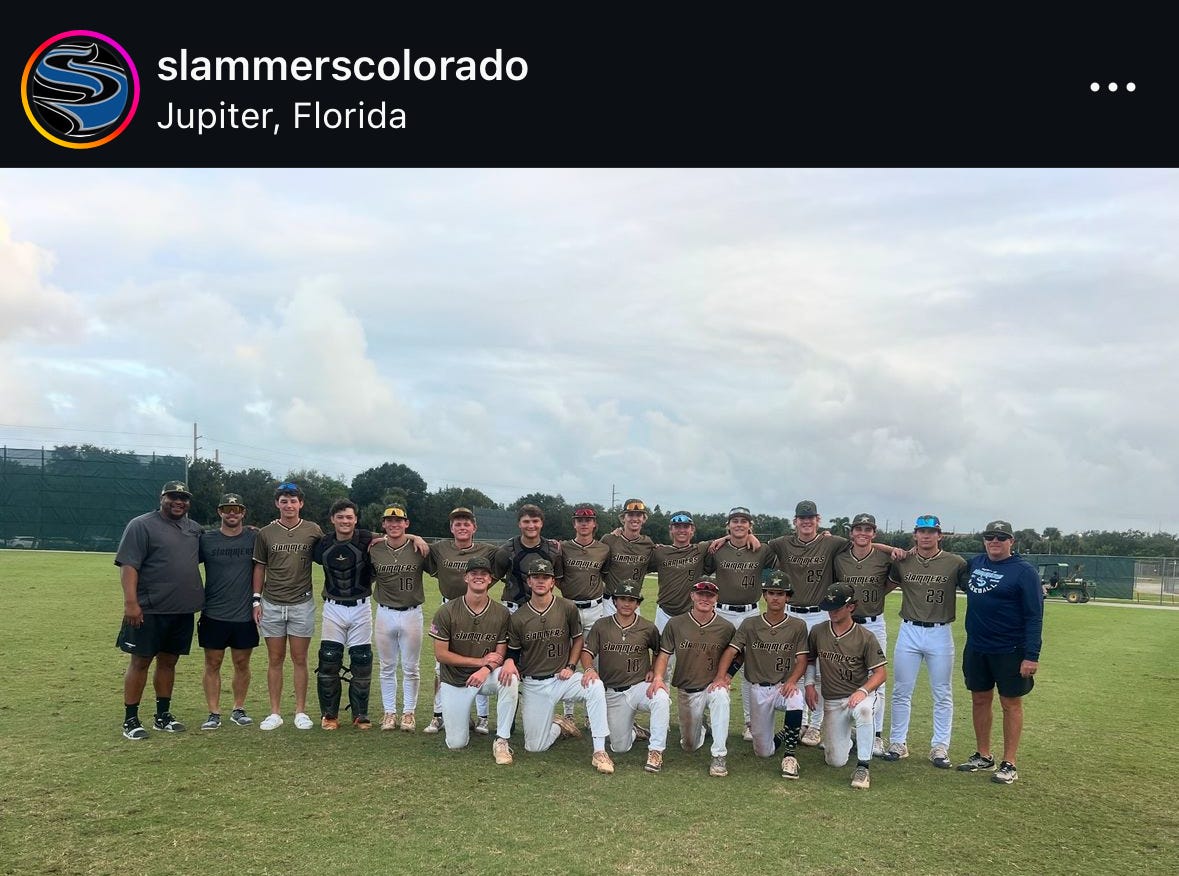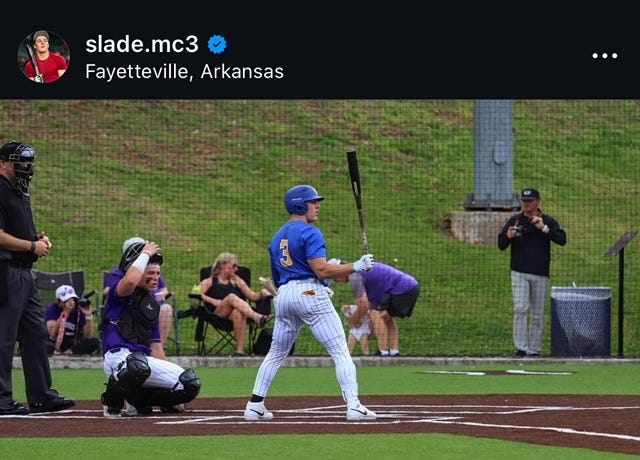Metric + Stat Benchmarks for Aspiring College Baseball Players
Check your boxes and the goal becomes attainable.
It’s been another banner year for Slammers players committing to play college baseball. 44 players (and counting) in our 2025 class are committed to play in college including 28 total D1 commitments (10 in the Power 4); 4 D2 commitments; 7 D3 commitments; 4 Junior College commitments; and 1 NAIA commitment. Congratulations to all of the families and players for their dedication and hard work. In an age of the transfer portal and roster-size uncertainty, it’s never been harder for a high school player to land an opportunity.
As an organization, we are proud of the work we put in alongside your players. But, we also know that it is the player who must perform in the batter’s box or on the mound. It is the player who must commit to the work that occurs off the field – skill work, strength and conditioning, speed. It is the player who must commit to optimizing their routines – sleep, nutrition, recovery. If a player is meeting thresholds and performing on the field, Slammers has every connection and exposure opportunity a player could ever need to go wherever they want to go.
With that being said, what are the thresholds? What boxes do you need to check? This blog is for our 2026’s, 2027’s, 2028’s and beyond. You don’t need to check every box. But the more boxes you check, the better off you’re going to be. The recruiting landscape has never been more competitive. If you want to play Division 1 baseball (or D2, D3, JuCo, NAIA), you need to go perform on-field and you need to make sure you have the physical tools (throw hard, hit hard, size, and athleticism) to match. If you’re 5-10, 170 lbs. and you hit .400 this summer with 3 total extra-base hits – you need to get stronger and faster. If you’re a 6-3, 200 lb.-specimen with light tower power and top-end speed and you hit .190 this summer – you need to go prove it in the batter’s box. Again, the more boxes you check, the better off you’ll be when pursuing a college opportunity. In 2024, college baseball programs are trying to reduce their risk in recruiting as much as possible. Fewer boxes checked = more risk. Keep reading…
Measurables
We’ve been collecting measurables on all of our players for years now. What have we done with these measurables?
Provided them back to you in the dashboard with age-level comparisons. If you haven’t been checking your email for the past year and need access to your profile, email: mpajak@slammersbaseball.com and I’ll resend. If you lost the link to the site, but have your credentials - click here.
Using them to make sure that what we’re helping you get better. Examples: AVP, Athletic Foundations, Bitzer 2027.
Using them to promote our players to colleges. For the past 2 years, every D1 and D2 college in America has been provided a full list of all Rapsodo, Loden, and summer stats from May/June evaluations. They have everything on every player who has shown up.
Using them to create content to feature our players with concrete, objective information - Slammers Top 2026 Performers + Slammers Top Uncommitted 2025 Performers. Our @SlammersAD twitter account is followed by 40+ college coaches and growing.
Below are a few tables to bookmark for reference. I’ve taken the time to provide averages for what a Power 4, Mid-Major D1, D2, D3, and JuCo/NAIA player look like as a sophomore and a junior. Additionally, you can see what average looks like across our program as well.
Physicality and Athleticism
“Indiana had all of their 2025’s on campus for the Michigan game. All of their football recruits were there too. Standing next to the football recruits, the baseball guys were much more physically imposing.” - Pro Scout
Look, that’s a very real quote. Size and athleticism are separators. That’s why we have Bailey Collins and Dan Perse. That’s why we run and jump multiple times each year to track these things. Take a look at the weight room the next time you come in. It has everything you could ever possibly need. TALK TO BAILEY AND DAN – they are literally here FOR YOU. It’s hard enough to get the attention of D1 coaches, but if you aren’t checking certain aesthetic boxes, it gets even more difficult.
Go back and look at the benchmarks – the metric separators for higher level players are weight, power, and speed; and the stat separators for hitters are slugging percentage and lower strike out rates; and for pitchers, whiff. Weight, power, speed, slugging percentage, and whiff are all related to getting after it in the gym. As weight, power, and speed go up, so do the ability to hit the ball harder (generate more slug) and throw the ball harder (generate more whiff).
GO SEE BAILEY AND DAN.
Counterpoint… there are small players in Power 4 baseball. What about Slade Caldwell? He’s only 5’6” and he was one of the best players in the 2024 class.
Slade Caldwell was also one of the STRONGEST players in the class and has had a 600 lb. deadlift since his freshman year of high school. Small doesn’t exclude you from consideration – weak does. Lean doesn’t exclude you from consideration – weak does. Being strong is ENTIRELY within your control.
It’s encouraging to see when our guys get it. When it clicks. They understand what it takes. We see some of you dialed into objective improvement. You’re taking advantage of having access to all of your numbers to chase the thresholds of where you want to go. With the information we collect at Slammers on every player, you have an advantage that most high school and club players don’t have. You know exactly what you need to do.
The data we collect on every player and the thresholds above should heighten self-awareness and help you focus in on an attainable goal. Slammers has every program and tool available to get you to your goals. Our staff is loaded with current and former pros and Division 1 players, college coaches, and people involved at every level of the game. If you have questions on anything, ask.




